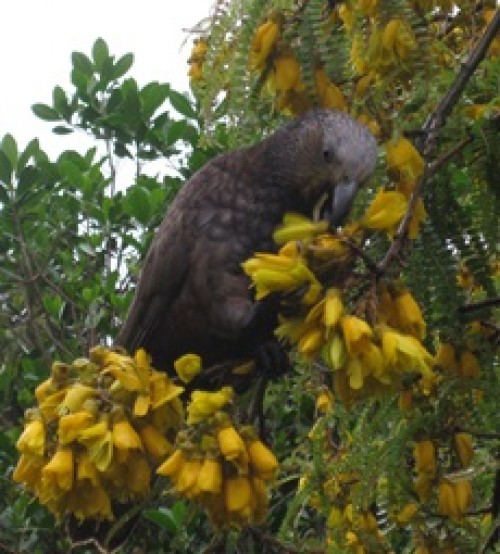Posted on 01st September, 2015
These forest dwelling parrots are now found mainly on off-shore islands due to bush clearance and introduced mammal pests. In the suburbs of Wellington around the predator proof Karori sanctuary Kaka is a common sight.

The off-shore island strong holds for these birds are Hen & Chicken Island, Little Barrier, Great Barrier Islands, Kapiti and Mayor Island. Being a forest bird they obtain all their food from trees eating seeds, fruit, nectar, and wood boring invertebrates. Unlike the Tui, Kaka is reckless and destructive when feeding. Rather than delicately milking the flowers for the nectar they tend to just pull the flowers to bits. Kakas are very efficient fliers capable of covering long distances over water in search of seasonal food supplies. They have unmistakable calls, from harsh greeting screeches to a variety of loud musical whistles.
There was a time when it was a common activity to trap, kill and eat Kaka which is how Tutukaka got its name. This usually occurred in January when the Pohutukawa where flowering and there was little other food in the forest. (Kaka that was feeding on nectar of rata and pohutukawa was reportedly delicious.) Birds were either speared or caught using snares, being trapped by the feet when the fowler pulled hard on the running cords and before the captured Kaka could chew through the cords.
